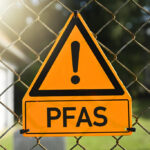
Proposals for a PFAS ban that conflicts with the finalisation of European Union F-Gas regulations have raised significant concerns among various stakeholders. Current drafts of these regulations pose a threat to global air-conditioning and refrigeration market as it works to integrate new-generation refrigerants and technologies aimed at combating climate change. The proposed PFAS ban: Known … Continue reading Europe makes progress on conflicting PFAS ban and F-Gas phase-out regulations










